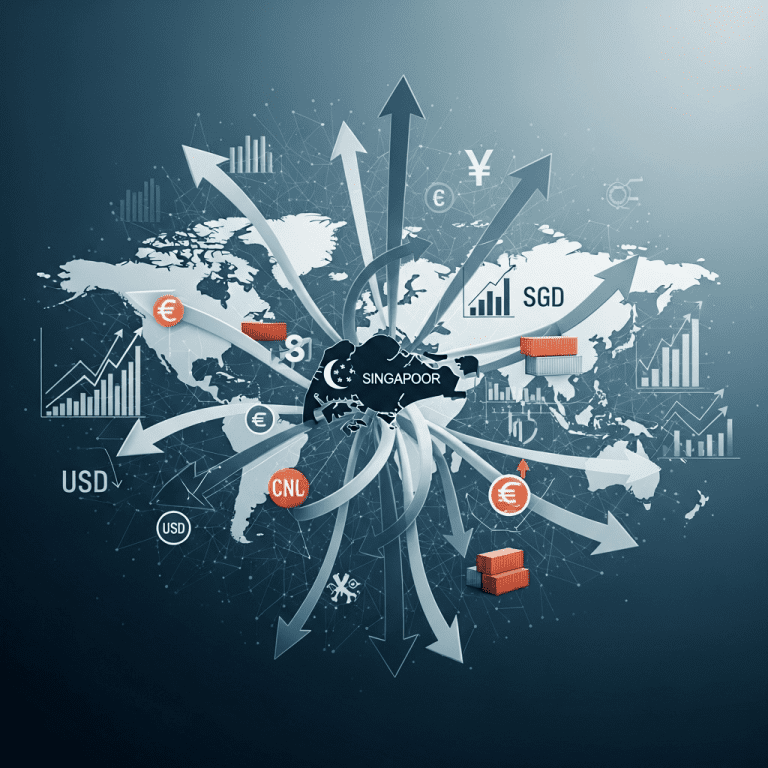As global markets brace for rising uncertainty, Singapore’s prime minister warns of ‘messy’ transition to post-American order, sending ripples through international financial communities and signalling the start of a new era in economic geopolitics. His candid assessment raises pivotal questions about the future of global trade, regional alliances, and investment strategy amid shifting superpower dynamics.
Singapore’s prime minister warns of ‘messy’ transition to post-American order: Key Economic Concerns
Prime Minister Lawrence Wong’s recent remarks underscore the magnitude of the transformation the world may soon witness. With the traditional U.S.-led global order fraying amid rising tensions between America and China, Wong cautioned investors and policymakers to prepare for growing volatility, fragmented trade alliances, and unpredictable regulatory shifts. According to Wong, Southeast Asian economies such as Singapore are especially vulnerable to this change; the city-state’s open economy has long benefitted from free trade and the security umbrella provided by U.S. influence in the Asia-Pacific region.
Wong’s speech echoed broader anxieties circulating among global leaders at key forums such as the Shangri-La Dialogue. He noted that as the U.S. gradually retreats from its role as the global economic linchpin, no single country—including China—is likely to replace it soon, leading to a prolonged period of strategic ambiguity. Businesses and investors must adapt to an environment where rules are not uniformly enforced and economic blocs could diverge on regulation and technology standards.
Investment Implications Amid Shifting Global Power Structures
For investors seeking sustainable growth strategies, the warning from Singapore’s prime minister is both timely and consequential. Market volatility could spike as economies jockey for influence and supply chains realign. Southeast Asia may see both new opportunities and heightened risks: Some multinational firms could relocate operations to the region, drawn by its neutrality and growth prospects. However, these gains may be offset by regulatory uncertainty, trade disruptions, and complex compliance landscapes.
Leading financial analysts emphasize that diversification—both geographically and across asset classes—will be vital. As the rules of trade, intellectual property, and digital commerce become more fragmented, traditional risk models may require reevaluation. For instance, U.S. dollar dominance could wane in global reserves and trade settlements, spurring demand for regional currencies or blockchain-based assets.
Geopolitical Realignment: What It Means for Global Investors
Singapore’s leader specifically pointed to the risk of the Asia-Pacific splitting into competing economic and security blocs. This ‘messy’ transition, he argues, could stall investment in critical infrastructure, slow innovation, and make it harder for emerging economies to access capital and technology. For global investors, understanding local political contexts and regulatory regimes will become as important as tracking financial data. Firms with robust regional strategies and deep local expertise are more likely to thrive in the new multipolar environment.
For instance, those monitoring emerging market trends might note increased intra-Asian trade and investment flows as regional economies forge new alliances. Yet the potential for disruptions remains high—particularly in industries such as semiconductors, green technology, and digital finance, where U.S.-China rivalry is sharpest.
Singapore’s Strategy: Adaptation and Resilience
Singapore, a longtime beneficiary of open markets, is actively recalibrating its national strategy in anticipation of the coming order. The government is investing heavily in digital infrastructure, supply chain flexibility, and international partnerships beyond the U.S. and China. Prime Minister Wong has called on the private sector to remain nimble and innovative, highlighting the importance of agility amidst mounting global uncertainty.
This approach mirrors the broader trend among smaller open economies: diversifying economic ties, fostering regional cooperation, and doubling down on governance and regulatory excellence. For global asset managers and multinational firms, Singapore still offers a stable, transparent, and well-regulated environment—qualities that are increasingly rare as geopolitical risks mount worldwide.
Navigating the ‘Messy’ Transition: Practical Steps for Investors
For financial professionals, Wong’s assessment is a call to action: Start building resilience now. Diversify portfolios with an eye on regional growth drivers, invest in companies with adaptive supply chains, and monitor shifts in regulatory frameworks. Staying abreast of markets with robust sovereign credit ratings and open capital accounts—like Singapore—remains prudent, but spreading exposure across markets that can absorb shocks will be key.
In addition, working with trusted local partners, investing in ESG and digital infrastructure assets, and using scenario analysis to stress-test portfolios can help weather the volatility anticipated in a post-American world. Monitoring reliable information sources and developing a nuanced understanding of cross-border regulatory changes is paramount. For the latest updates and analysis, risk management insights from industry leaders can be invaluable.
Looking Ahead: Opportunity Amid Uncertainty
While the transition to a post-American global order may be ‘messy’, as Singapore’s prime minister warns, it also introduces unique opportunity. Businesses and investors that adapt quickly can benefit from emerging market growth, regional innovation, and new supply chain configurations. Yet, success will require diligence, agility, and a willingness to embrace uncertainty as the world’s economic order evolves.
In summary, Singapore’s sober warning should prompt investors everywhere to reconsider their strategies and prepare for a less predictable—yet potentially more dynamic—global economy in 2025 and beyond.









